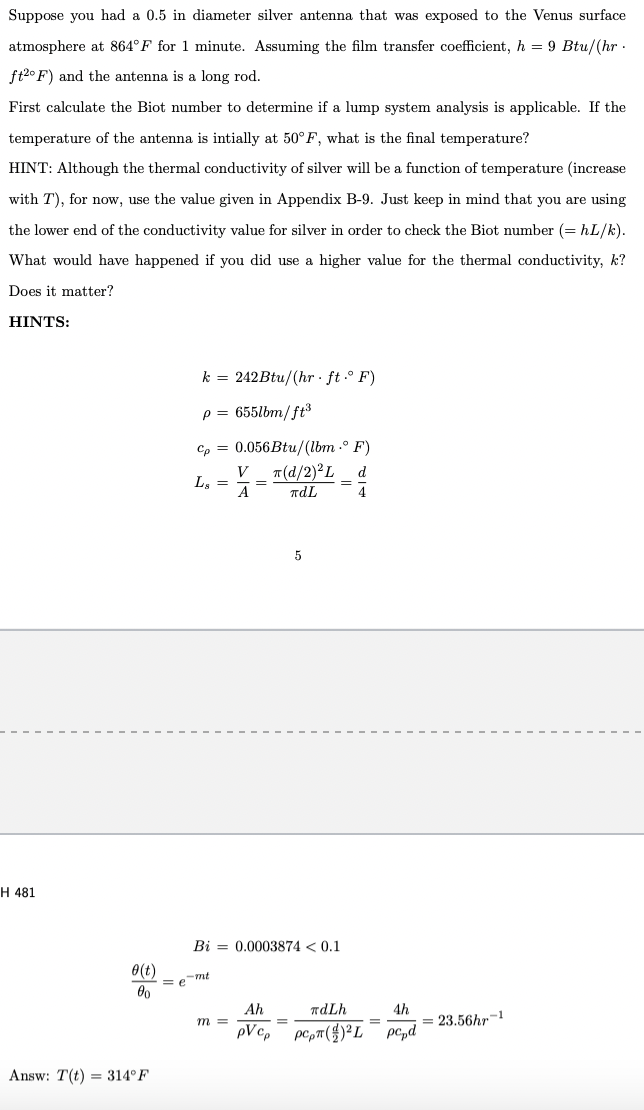Answered step by step
Verified Expert Solution
Question
1 Approved Answer
Suppose you had a 0.5 in diameter silver antenna that was exposed to the Venus surface atmosphere at 864F for 1 minute. Assuming the

Suppose you had a 0.5 in diameter silver antenna that was exposed to the Venus surface atmosphere at 864F for 1 minute. Assuming the film transfer coefficient, h = 9 Btu/(hr. ft2 F) and the antenna is a long rod. First calculate the Biot number to determine if a lump system analysis is applicable. If the temperature of the antenna is intially at 50F, what is the final temperature? HINT: Although the thermal conductivity of silver will be a function of temperature (increase with T), for now, use the value given in Appendix B-9. Just keep in mind that you are using the lower end of the conductivity value for silver in order to check the Biot number (= hL/k). What would have happened if you did use a higher value for the thermal conductivity, k? Does it matter? HINTS: H 481 k = 242Btu/(hr ft F) p = 655lbm/ft Cp = 0.056Btu/(lbm. F) d T(d/2) L TdL Answ: T(t) = 314F V L = = A 0(t) = e-mt 00 5 Bi 0.0003874 < 0.1 m = = 4 Ah #dLh 4h pVcp pcp()L pcpd = 23.56hr-1
Step by Step Solution
★★★★★
3.44 Rating (157 Votes )
There are 3 Steps involved in it
Step: 1
Lets first determine the Biot number Bi h L k is the definition of the Biot number where Film transf...
Get Instant Access to Expert-Tailored Solutions
See step-by-step solutions with expert insights and AI powered tools for academic success
Step: 2

Step: 3

Ace Your Homework with AI
Get the answers you need in no time with our AI-driven, step-by-step assistance
Get Started


